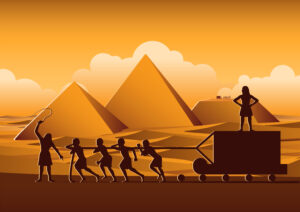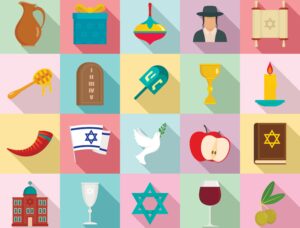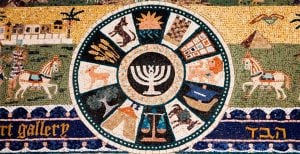 Central to the Jewish belief in a living G-d is the belief that He communicated His will to man, the one creature whom He endowed with free will to follow it. In fact, the very essence of Judaism rests upon an extraordinary one time event in history, the Divine revelation at Mount Sinai in which the entire nation experienced together. The result was the giving of the 10 commandments, the root of everything that today we call “Torah,” meaning “to teach,” a profoundly beautiful tapestry of Divine law that teaches man how to live in this world in the fullest sense of the word. It was the sprouting of the “Tree of Life”.
Central to the Jewish belief in a living G-d is the belief that He communicated His will to man, the one creature whom He endowed with free will to follow it. In fact, the very essence of Judaism rests upon an extraordinary one time event in history, the Divine revelation at Mount Sinai in which the entire nation experienced together. The result was the giving of the 10 commandments, the root of everything that today we call “Torah,” meaning “to teach,” a profoundly beautiful tapestry of Divine law that teaches man how to live in this world in the fullest sense of the word. It was the sprouting of the “Tree of Life”.
Written Torah
After Mount Sinai, the “Written Torah” was written down by Moses through direct Divine prophecy during the forty-year period after the Exodus. If the 10 commandments are the root of the Tree, the Five Books of Moses (“Chumash”) are the trunk. Beginning with the Creation of the world and ending with Moses’ death, the Chumash is on the surface a body of instructive stories scattered with a bunch of commandments, however underneath are worlds of infinite depth and understanding possessing the deepest secrets of Creation. In Hebrew, the name of each book is derived from the first word that appears in each book:
• Genesis (Beresheit) – This book chronicles the Creation of the world, the story of Noah’s Ark, and begins the chronicles of Judaism’s patriarchs and matriarchs, beginning with Abraham and Sarah and ending with Joseph in Egypt.
• Exodus (Shemot) – This book tells story of the Israelites’ slavery in Egypt, their exodus and journey to Mt. Sinai and their subsequent wanderings in the desert.
• Leviticus (Vayikra) – This book deals mostly with priestly matters such as rituals, sacrifice, atonement and ritual purity.
• Numbers (Bamidbar) – The Israelites continue towards their journey to Israel.
• Deuteronomy (Devarim) This is the final book of the Torah. It recounts the Israelites’ experiences according to Moses and ends with his death just before they enter the Promised Land.
The rest of the books of the Hebrew Bible consist of the Prophets (Neviim) and the Writings (Ketuvim), written down over the following centuries. The Neviim convey the messages of various Prophets in the context of Israel’s early history, including their ongoing struggles to strengthen greater adherence to the Torah.
The Ketuvim range from spiritual wisdom (Psalms, Proverbs, Ecclesiastes), to narrative ( Ruth, Job, Esther), to the prophetic (Daniel), to the continuation of the historical account of the exile into Babylon until the return to the Land of Israel and the building of the Second Temple.(Ezra, Nehemiah, and I and II Chronicles). Torah, together with the Neviim and the Ketuvim are referred to as Tanach.
Oral Torah
According to Jewish tradition, Moses also received the Oral Torah at Mt. Sinai.  The Oral Torah embodies the branches of the Tree, an intricate web of all the finer points of the commandments, the details of the general principles contained in the Written Torah and the ways by which the commandments were to be applied.
The Oral Torah embodies the branches of the Tree, an intricate web of all the finer points of the commandments, the details of the general principles contained in the Written Torah and the ways by which the commandments were to be applied.
Ultimately, in order to ensure its survival, the Oral Torah was also redacted to writing, (around 200 C.E.), and codified into the “Mishna”, which in turn became the basis for the Talmud, a massive collection of discussions and commentaries based on the underlying principles of the Mishna.
Rabbinic Torah
In the broadest sense, however, the study of Torah refers not only to the Written and Oral Torah, but also to the entire body of Rabbinic literature that developed over the centuries. Indeed the Torah was always a living body of work, re-applied to ever changing historical circumstances over thousands of years, including Jewish law, exegesis, philosophy, ethics and mysticism. Though the application of human understanding, these “fruits” of labor are an integral part of Jewish law to which the Torah itself grants authoritative status: “According to the law which they shall teach you and according to the judgment which they shall tell you, you shall do” (Deuteronomy 17:10-11).
Indeed the Torah was always a living body of work, re-applied to ever changing historical circumstances over thousands of years, including Jewish law, exegesis, philosophy, ethics and mysticism. Though the application of human understanding, these “fruits” of labor are an integral part of Jewish law to which the Torah itself grants authoritative status: “According to the law which they shall teach you and according to the judgment which they shall tell you, you shall do” (Deuteronomy 17:10-11).
The Torah, in all its different facets, is Judaism, enabling the relationship between G-d and man and the resulting unity and harmonization of all Creation as a result.







